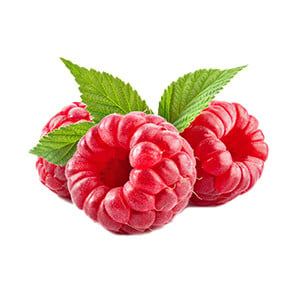Raspberry

Raspberry
Rubus idaeus
Plant family
Rose family (Rosaceae)
Season Overview
Planting
Harvest
Harvest
J
F
M
A
M
J
J
A
S
O
N
D
1ST YEAR
FOLLOWING YEARS
Details
Light requirement
Semi-shaded
Water requirement
Wet
Soil
Light (sandy)
Nutrient requirement
Low
Light germinator
Plant distance
40 cm
Row spacing
50 cm
Seeding depth
0.5 cm
Instructions
The season for this plant is over. The following instructions are for the next season.
Beginning of July
Thinning
Every 52 Weeks
Beginning of July
Tie up
Every 52 Weeks
Beginning of July
Cut back
Every 52 Weeks
Description
Raspberry belongs to the rose family. It is a fruit shrub that produces aromatic sweet and sour fruits and can grow 0.6 to 2 m/0.7-2.2 yd high, depending on the variety. Its white flowers, arranged in clusters, bloom from May to June. In summer, the raspberry develops fruits. Depending on the variety, they form yellow, black or red berries (actually aggregate fruits), which have a high vitamin C content. The bright red and dark ones also contain anthocyanins, which act as antioxidants. Raspberries are popular summer fruits that go well with many desserts, but they also taste good just like that.
Origin:
The raspberry's range is in Europe, North America and northern Asia, where it grows in forest clearings and along forest edges.
Growing tips
Raspberry prefers to grow in the garden in a sheltered, semi-shaded to sunny place. To allow a good harvest already in the first year, plant the root balls already in the fall, but you can still plant them in the spring. Before planting, it is best to loosen the soil and mix in some compost, as the raspberry prefers a loose humus-rich soil. When planting, cover the buds with about 5 cm/2 in of soil and keep a distance of 40-50 cm/15.7-19.7 in between the root balls. Immediately after planting, water the root balls well. Depending on the height of your variety, you can also build a small framework to support the raspberries and facilitate care and harvesting.
Companion Plants
Antagonistic Plants
Diseases
Root Rot
Pests
No pests